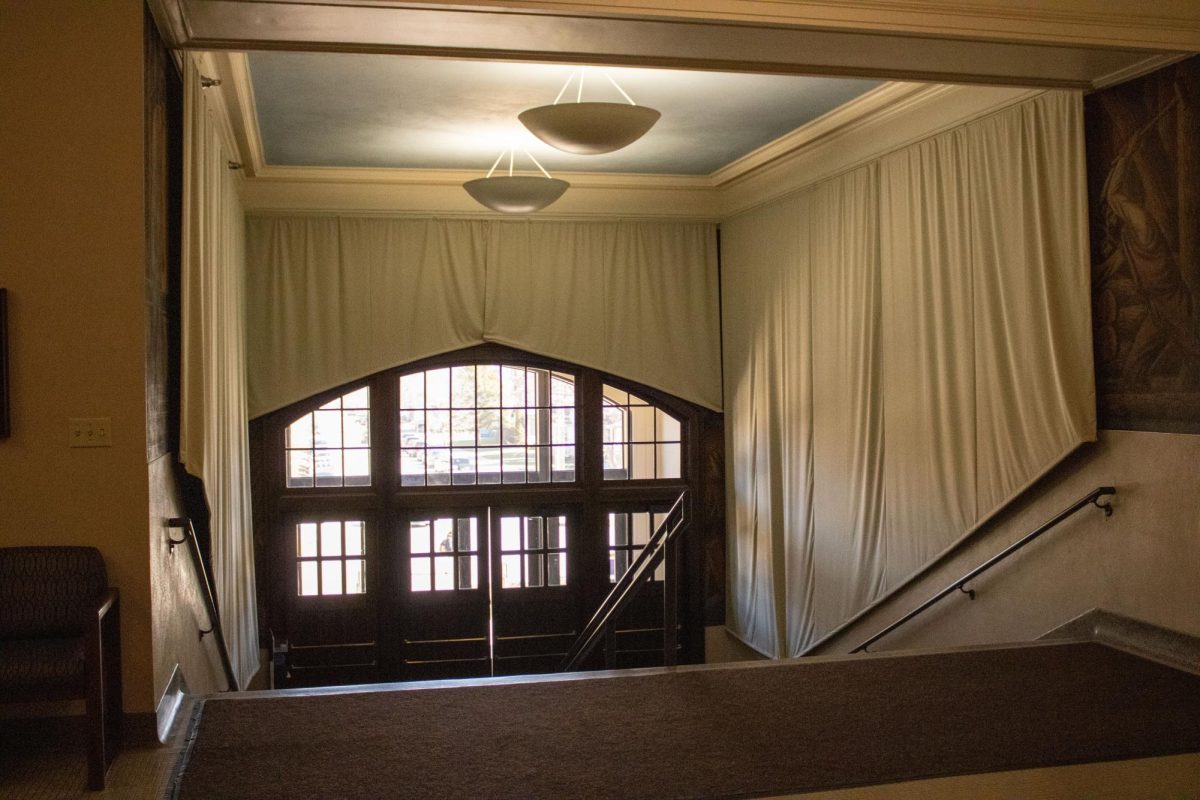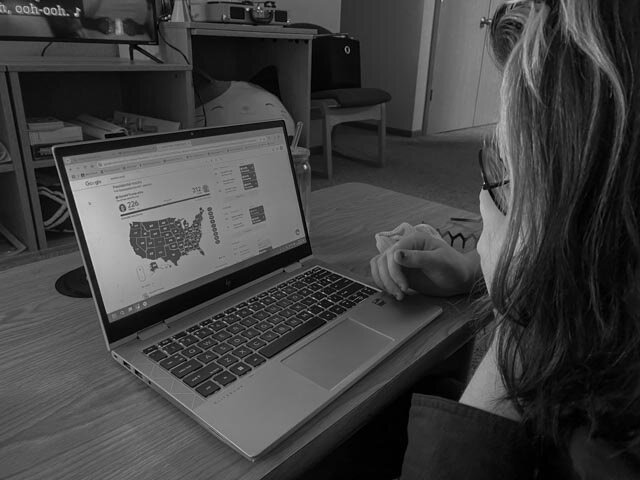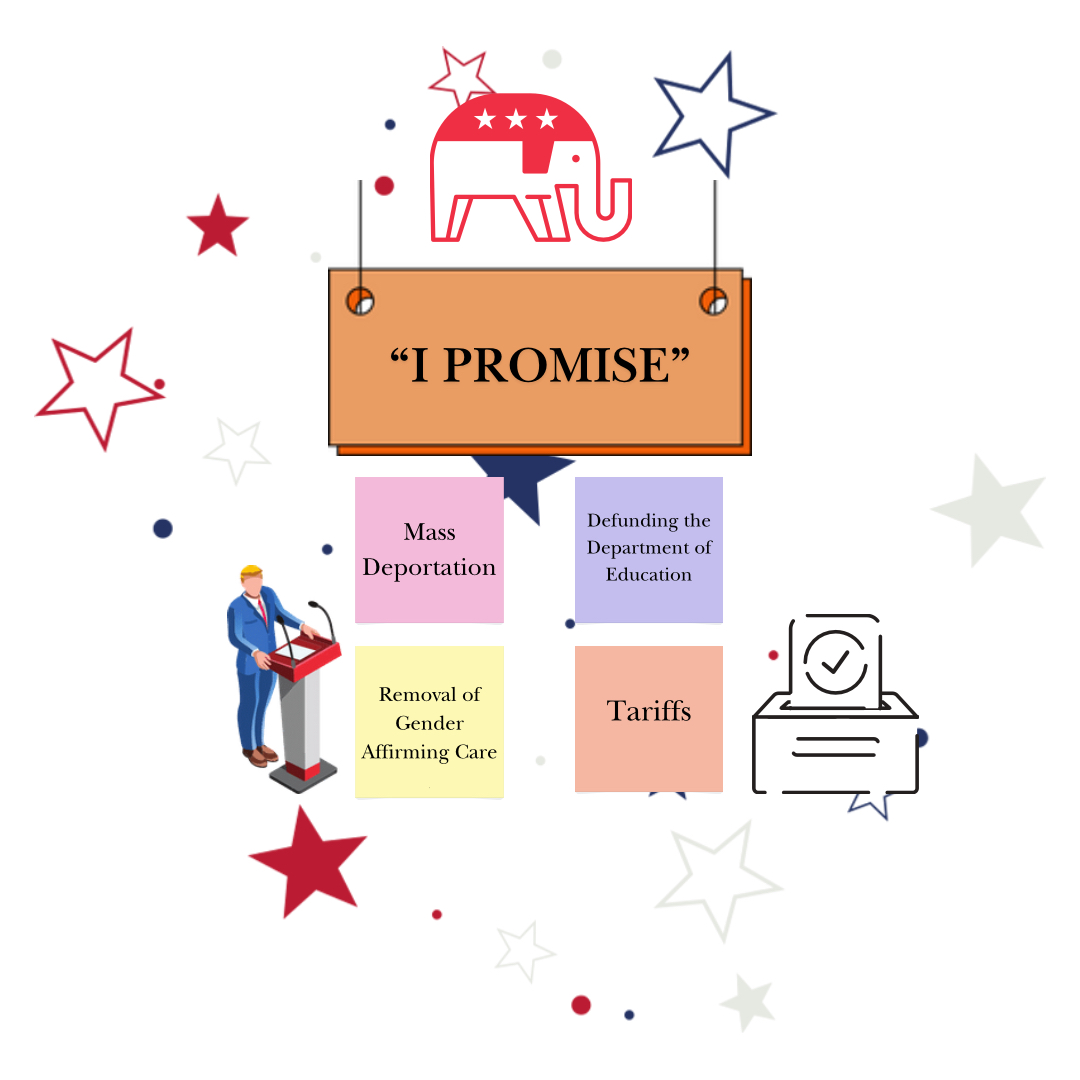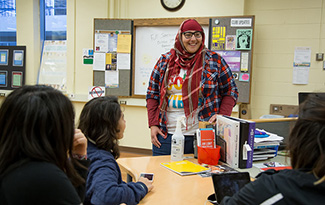
Olivia Volkman-Johnson / Winonan
The origin of one of the most derogatory racial slurs in history has provoked a campus-wide conversation on racial climate.
Marcellus Davis, a critical race theorist and co-founder of Change Agent Consulting, hosted a presentation titled “Everybody Wanna be a Nigga, but Nobody Wants to be a Nigger” open to all Winona State University students and faculty, as well as Winona community members on Monday, Oct. 17.
The presentation, co-presented by Director of Inclusion and Diversity Alexander Hines, deconstructed the history and usage of the word ‘nigger’ and its role as a “conduit” for white supremacy in the United States.
Davis’ presentation was sponsored by the Inclusion and Diversity office, which strives to “educate the campus and community through co-curricular programming,” according to Hines.
As a Winona State alumnus, Davis explained his desire to return to campus and help foster conversations about race and inequality.
“I was only here for a semester, so every opportunity that I get to get closer to completion, to get closer to helping create a space that’s racially inclusive, I must take up that opportunity, because when I was here, that opportunity was not presented in the same fashion,” Davis said.
In the presentation, Davis explains the origin of the word ‘nigger’ as a derogatory slur directed towards African slaves, which developed into a slur for members of any minority group, then a term of endearment between African Americans.
Though some believe the words ‘nigger’ and ‘nigga’ have completely different meanings, Davis and Hines believe the use of the word perpetuates white supremacy and its effects.
“In our opinion, white supremacy has birthed racism…. ‘nigger’ is just the offspring of it,” Davis said.
With white supremacy as the foundation for racial injustice, Davis and Hines used critical race theory to explain why race—the meaning individuals attribute to physical characteristics—is used to oppress racial minorities.
“What keeps us in check is fear, ignorance, insecurity and confusion because you don’t want to be out of the dominant group. It doesn’t pay well,” Davis said.
At Winona State, faculty, staff and students see race and racism as important discussions to have on campus.
Jennifer Chernega, chair of Winona State’s sociology department, explains how race, along with racial stereotypes, can influence how society views individuals and how these individuals view themselves.
“We use society kind of as a mirror to figure out who we are… some of those messages are influenced by stereotype regarding race or ethnicity. Those are things people will start to believe about themselves unless they have reason to believe otherwise,” Chernega said.
Chernega discussed how racial stereotypes, even supposedly positive stereotypes, can take a toll on the people who face them.
“When folks have to counter those stereotypes all day, every day, in every interaction, it is stressful…it uses up the emotional energy that could be used towards something else,” Chernega said.
Hines described how these stereotypes can prompt racial microaggressions—comments or behaviors about race that intentionally or unintentionally discriminate against members of that race.
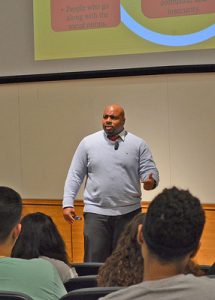
KEAP Council co-coordinators Alexis Salem and Nasro Abbas have found that some Winona State students have experienced this form of discrimination on and off campus.
“We by no means can speak for everyone; however, the absent narratives we’ve heard from our peers [show] that racism and discrimination of many varieties…are present on our campus and in the town of Winona,” Salem said.
KEAP Council was created in 2011 in order to address the inhospitable climate and the urgency by bringing attention to those of varying races, ethnicities, gender identities, sexual orientations, disabilities and more by providing a space for these students, according to Salem.
“Our main goals are to advocate for students in their endeavors to create an equitable campus and create solidarity among the student body,” Salem said.
According to Winona State, 85.8 percent of Winona State students are white, while African American, Asian, Hispanic/Latino, Native American, Pacific/Hawaiian Islander, International and multi-racial students make up the remaining 14.2 percent.
KEAP Council and the Inclusion and Diversity office have pledged to give a voice and a space to minority students and their allies, though Chernega believes most of Winona avoids discussing these matters.
“I think Winona, like a lot of Minnesota, is very good at not talking about race,” Chernega said.
According to Davis, the discomfort associated with discussing sensitive issues, particularly race, is due to a sociological theory called cognitive dissonance.
In his presentation, Davis cited notable sociologist Frantz Fanon who explained this phenomenon by saying, “Sometimes people hold a core belief that is very strong. When they are presented with evidence that works against that belief the new evidence cannot be accepted.”
Mary Jo Klinker, an associate professor of women, gender and sexuality studies at Winona State, believes this occurrence prevents those who benefit from white supremacy from acknowledging its existence and effects.
“Individuals don’t want to be called racists, but they don’t want to do anything to address this system of white supremacy that they live in,” Klinker said.
According to Klinker, some of the lingering effects of this system have led to inequities in income, housing and education in Winona.
“I’ve never lived in a place that’s as hyper-segregated around income and race as Winona,” Klinker said.
Many Winona State professors believe the upcoming election has magnified these inequities in both local and general campaigns.
A recent article in the Winona Daily News reported that Brian Conner, a candidate for Winona County board, “posted a photo of a baby monkey on his Facebook page with words over the photo reading ‘Obama’s baby picture.’”
The article explained how Conner posted the photo as a joke related to political outcry for President Obama to release his birth certificate. He removed the photo after the overwhelmingly negative response from community members.
In a later Facebook post, Conner explained, “I removed the picture from Facebook when someone said that they were offended by it. It was only then that I realized people may look at it as ‘racist’ instead of birth certificate related!”
Chernega said the negative connotations of Conner’s post come from the historic comparisons of African Americans to animals.
“It was part of the attempts to make African Americans seem less human and therefore justify slavery. This is a terrible history he has tapped into,” she said.
Chernega believes this systemic oppression has deeply affected the local community, citing a Winona Post article that found only one third of African American students are graduating from Winona Senior High School.
Chernega said this is “unacceptable” and most likely due to what resources are available for families, as well as whether or not these students feel safe and comfortable while in school.
In an effort to address these climate issues, Winona Senior High School created FORTITUDE in 2006. According to the club, FORTITUDE is a “social justice group” made up of students “who work diligently to make a difference.”
Chernega and Klinker believe FORTITUDE, as well as KEAP council and other cultural clubs at Winona State, are important strides towards improving Winona’s racial climate and allowing students to voice their concerns.
“One thing that students can do is keep sharing their stories, and we need to record these testimonials,” Klinker said.
“I think they [should] keep talking in any venue they feel comfortable talking in about challenges, frustrations, what would help,” Chernega agreed.
Davis and Hines said they hope students take the information from the presentation to promote change and fight racial injustice.
“…if you don’t apply the knowledge that you receive, how do you advocate and be an ally for inequities?” Hines said.
Davis added, “A closed mouth, my mother told me, doesn’t get fed. A person who doesn’t want to see injustice will never see justice.”
-By Olivia Volkman-Johnson








































